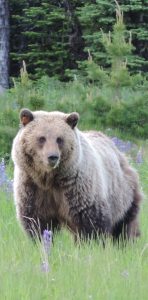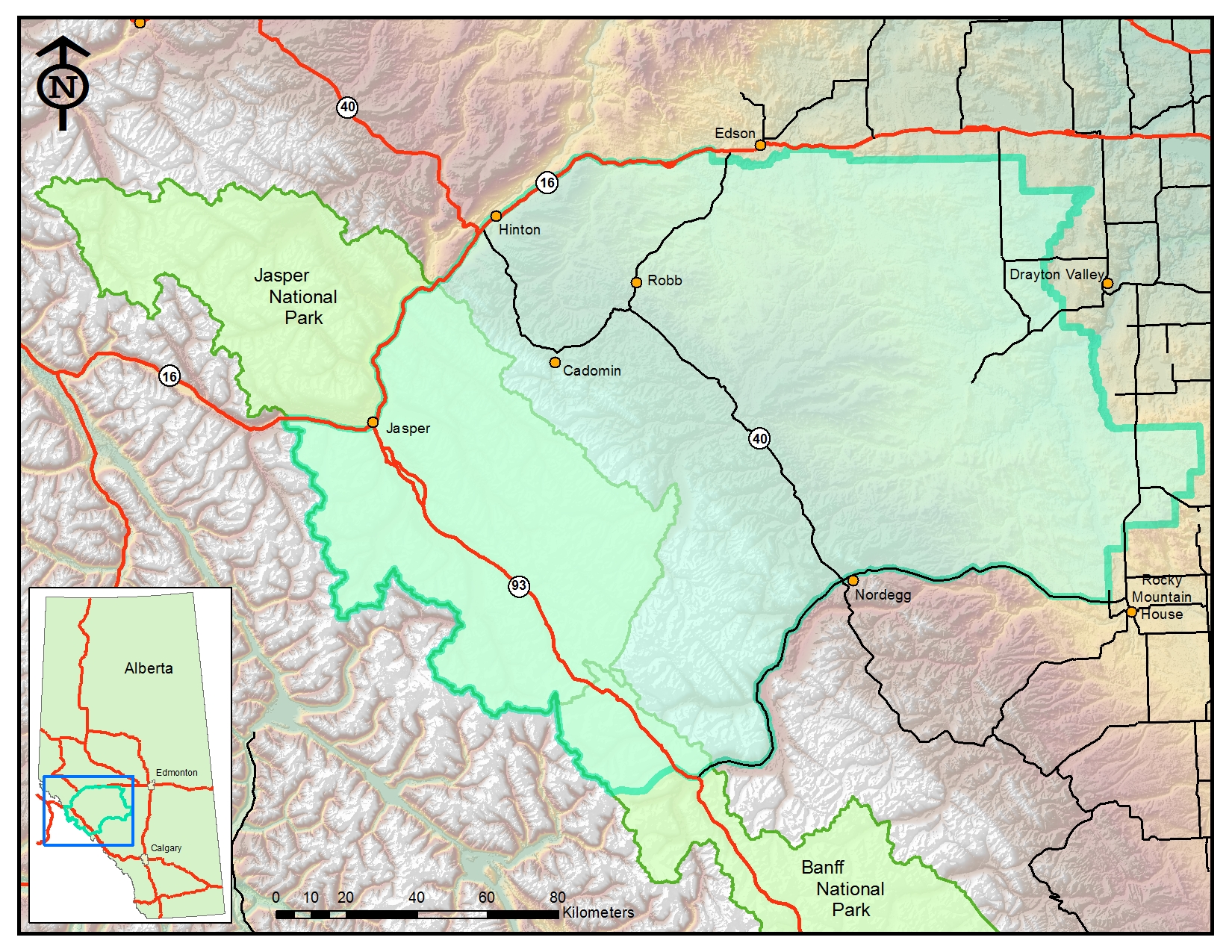|
Grizzly-PAW is an NSERC CRD research project that focusses on the grizzly bears in the Yellow head region of Alberta. Started in July 2016, this three year research effort studies bear movements, habitats and physiology with the objective of applying the knowledge towards the conservation of the grizzly bear in this region. Grizzly-PAW would like to thank NSERC and our industrial partners for making this research possible. Yellowhead Region Research activities are centred in the Yellowhead bear management area (BMA 3) in Western Alberta. This diverse landscape, home to approximately 74 grizzly bears, is changing due to industrial and human activity. Using remote sensing, wildlife surveillance techniques and DNA sampling, researchers will study the effects of disturbance on the habitat, behaviour and health of grizzly bears in the Yellowhead management area.
The Yellowhead BMA spans from the British Columbia border as far east as Rocky Mountain House. The northern border follows Highway 16 to Highway 22, which marks the eastern border. The southern border is Highway 11 and runs to the British Columbia/Alberta border. This area has a diverse geography and varying ranges of disturbance. The west side of the BMA is in Jasper National Park, giving the BMA a reasonable approximation of a control area for human disturbance. The area outside Jasper National Park though relatively unpopulated has undergone increasing levels of activity from resource extraction and exploration and recreational activities. Geographically, the western part of the BMA is part of the Rocky Mountains, and gradually turns to foothills towards the eastern border of the BMA. There are numerous types of bear habitat within the BMA including both forest and open terrain.
|
News
Year 2 AGMAug. 8, 2018 The 2nd Grizzly-PAW AGM will be held in Hinton, Alberta on Oct. 17-19th, 2018. Register here. Download the preliminary AGM program: PAW Y2 AGM Program.pdf Grizzly Bear Conservation Research in AlbertaDec. 7, 2016 UBC led project receives $1.4M grant to research grizzly bear populations to support recovery effortsA multi-disciplinary team of scientists is researching grizzly bear habits, health and habitat in the Yellowhead region of Alberta to support the province’s efforts in restoration and conservation of grizzly bears.With the award of $1.4M from the Natural Sciences and Engineering Research Council (NSERC), this collaborative effort combines the talents and resources of Dr. Nicholas Coops (remote sensing) at the University of British Columbia, Dr. Gordon Stenhouse (grizzly bear biology) at FRI Research, Dr. Scott Nielsen (ecology) at the University of Alberta, Dr. David Janz (conservation physiology) at the University of Saskatchewan, Dr. Chris Darimont (conservation) at the University of Victoria and eleven industrial partners (Alberta Newsprint Company, Canfor, Conoco-Phillips, FRIAA, Seven Generations Energy, Shell Canada, Repsol, Teck Coal, TransCanada Pipelines, West Fraser Ltd., Westmoreland Coal, and Weyerhauser).
The research team will investigate the environment, population performance and health of the grizzly bear in west central Alberta. Using a combination of remote sensing, tracking technologies and biological markers, data collected will be used to research how changes in environmental conditions affect their movement, behaviour and physiology. A better understanding of changes and their effects will aid in the development of long term conservation strategies.
The research program will conduct studies in forestry, ecology, geography and biology at the participating universities and will involve thirteen graduate students and post-doctoral researchers. |


